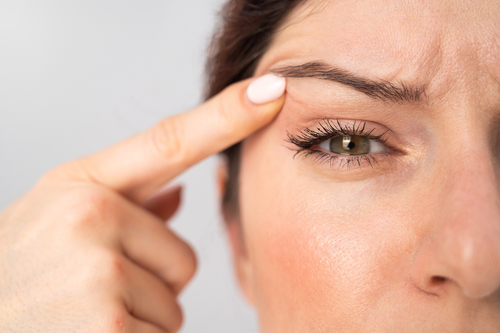
Do you have drooping skin on your upper eyelid area? Or, do you have bags under your eyes that won’t go away no matter how much sleep you get?
If you have excess skin around your eyes, blepharoplasty may be the answer for you. Blepharoplasty is a common procedure that removes excess skin, fat, and muscle from around the eyes.
It can improve both the functionality of your eyes and your cosmetic appearance. Keep reading to find out whether you may need blepharoplasty!
What Causes Drooping Skin Around Your Eyes?
The skin above and below your eyes can droop for several reasons. Drooping skin is an inevitable part of getting older.
As you age, your body produces less collagen and elastin. These are two essential proteins that give your skin its elasticity.
The skin on your face is often the first area to show signs of aging. Skin can droop above and below the eyes.
Drooping skin can range in severity. It can merely be a part of your appearance, or, for some people, skin can sag enough to interfere with their peripheral vision.
Another cause of drooping skin is ptosis. Ptosis is a condition where the eyelid muscle begins to weaken, causing the eyelid to can partially block or completely obstruct a patient’s vision.
Ptosis can affect a person of any age, including children. Infants can be born with it. In adults, it can be a result of aging or injury.
To improve symptoms of ptosis, eye doctors often recommend ptosis repair. However, blepharoplasty will likely be better if your issues stem from excess skin or fat on the eyelid.
How Does Blepharoplasty Work?
Blepharoplasty is a form of eyelid surgery. It is sometimes called an eyelid lift.
There are two types of blepharoplasty. Upper blepharoplasty removes excess skin from your upper eyelids.
Lower blepharoplasty removes excess fat from your lower eyelids. The surgery is typically performed in an outpatient setting.
First, your eye doctor will numb your eyes to avoid any discomfort. You can get both an upper and a lower blepharoplasty during one procedure. It generally takes an hour or two.
For upper blepharoplasty, the surgeon will make a small incision along the natural folds of your lids. They will then remove excess tissue.
Stitches may be required to close the incision. For lower blepharoplasty, they will make a similar incision in the crease below your eye, or along your eyelashes.
They will then remove tissue that is collecting beneath the eyes. Stitches are often unnecessary for lower blepharoplasty as the incision can heal independently.
You can expect to return home the same day. One straightforward procedure can free you of drooping eyelids affecting your ability to see or dimming your confidence.
Who Is a Good Candidate for Blepharoplasty?
Anyone with drooping skin can be a candidate for blepharoplasty. You can choose to get eyelid surgery for functional or cosmetic reasons, or both.
Blepharoplasty may be an excellent option for you if you have:
- Drooping upper eyelids
- Bags under your eyes
- Difficulty seeing due to excess skin
Blepharoplasty has the power to give you unimpeded vision. It can also make you confident in your appearance.
You’ll look younger and more alert. After blepharoplasty, you can feel confident in your skin again.
To qualify for blepharoplasty, you should have good general health. The best candidates for blepharoplasty do not smoke and have realistic expectations for what the procedure can achieve.
Those who have conditions including chronic dry eye or other health conditions may not qualify.
Are you ready to get rid of excess skin around your eyes? Schedule a consultation at Rosenthal Eye Surgery and Fifth Avenue EyeCare in Long Island, NY, today to find out if you are a good candidate for blepharoplasty.
